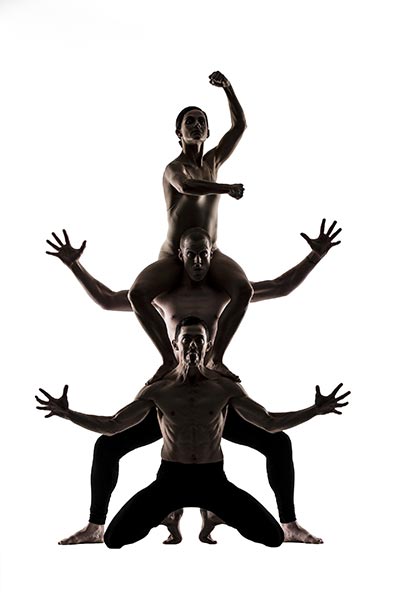 |
|
Moko, by Atamira Dance Company from New Zealand, will be staged in Beijing on July 25.[Photo by Lewis Mulatero / For China Daily] |
Atamira Dance Company, a leading Maori performing arts entity from New Zealand, will make its China debut at the Beijing Dance Festival on July 25.
Atamira's artistic director Moss Patterson will bring Moko, a work choreographed by him, to the annual two-week festival that promotes contemporary dance in China.
The performance, which is based on a traditional art form of body tattoo in New Zealand, premiered in 2013 and toured the United States with a show at the Jacobs Pillow Dance Festival.
The choreographer redeveloped the work in 2014, with a major show in Auckland City.
Patterson, of Ngati Tuwharetoa descent, started his career composing music and performing in Dunedin, New Zealand, 16 years ago.
He started to choreograph dance pieces based on Maori symbols in his much younger days.
But Moko was inspired by Cursive, a masterpiece by Taiwan choreographer Lin Hwai-min, who based his work on the aesthetics of Chinese calligraphy.
"A good friend of mine brought me the video of Cursive. I've enjoyed watching it many times. Lin is very inspirational," says Patterson.
In Moko, the audience is introduced to a spiritual journey, where Moko symbols are floating in a 3-D space.
The music, composed by Paddy Free and Peter Hobbs, is a combination of traditional instruments played in conjunction with electronic rhythms. There are also elements of rock music.
The choreographer says he grew up surrounded by New Zealand's grunge scene.
"Traditional sounds help me connect to who I am as an indigenous person, and the influence of the guitar-inspired score is more a personal choice and a personal aesthetic," says Patterson, who has been with the company since its inception in 2000.
He has choreographed performances such as Te Paki, Haka and Whakairo, and also worked for the opening ceremony of the 2011 Rugby World Cup in his country.
The word atamira means the stage on which they perform, giving voice to ancestral and contemporary Maori experiences through dance, he explains.
Beijing Dance Festival's program director Karen Cheung says: "Each year, we try to include a couple of new and particularly lesser known but quality works and ensembles in the festival. Atamira comes from this intention. ... It is interesting to see how a traditional world negotiates with a contemporary world."
Patterson says he has always wanted to bring his works to China.
"Recent anthropological studies have traced the history of Maori culture all the way back to China. With my fascination of traditional symbols, I hope to learn as much as I can while I'm here," he says.
His other reason for coming to China is deeply personal.
His father passed away while working with the Xiao-langdi Hydroelectric Power Plant project in Central China's Henan province in 2000.
"It will be good for me to find closure by bringing my dance here as a way of honoring him."
Patterson grew up with his grandmother, who gave him a wealth of knowledge and understanding about their tribe.
His childhood is filled with memories of a Maori life and how important family is to them, he says.
"I would wake up each morning and look at the rafters of our huge ancestral house, which is adorned with intricate carvings and drawings of our genealogy. These images and memories have inspired me to create."
|
|
|
|
|
|
|
|
